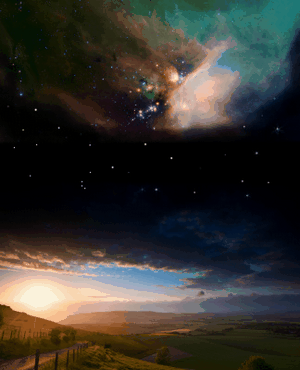The world of physics is a confusing mix of the observational and the experimental. Scientists that study physics often find they must admit whole new concepts into their understanding of how the world works. Such is the case with dark energy and its related concept dark matter.
Dark Energy
Not much is known about the dark energy. The term was coined to explain the amount of energy that was suggested by mathematical computations and its effects on the universe’s expansion that were observed by scientists during the 1990s. Ordinary, visible matter makes up only about 5 percent of the universe. Scientists calculate that the rest of the universe is composed of about 70 percent of dark energy. Another 25 percent of the universe is made up of dark matter. Dark energy and dark matter are related, but scientists do not know exactly in what way at the current time. They may occur at the same time or have some other relationship.
 Albert Einstein and Dark Energy
Albert Einstein and Dark Energy
In 1917, Albert Einstein, noted the presence of an unknown in his mathematical computations. Unsure of what it was or how it contributed to the universe, as he understood it, he called it the “cosmological constant,” a force that counteracted gravity to keep the universe from collapsing in on itself. Though he had no clear idea how this force worked, later scientific observations showed that not only is the universe not collapsing, it is expanding, and expanding exponentially. Dark energy is the power behind this expansion.
Defining Dark Energy
Scientists have a number of theories on what dark energy is. Some theorize that dark energy is a property of space itself. Einstein was the first to realize that space is not empty, and it is not “nothing.” Space has some singular properties that scientists are just beginning to probe. If the dark energy were a property of space itself, it would not be diluted as space expands. In fact, as more space came into being, they would detect even more energy.
Dark Energy and Quantum Mechanics
Another idea about dark energy came from quantum mechanical theory. Quantum mechanics allows particles to come into and out of being temporarily. That would explain how the energy could appear to be there, yet not be there. However, when the scientists tried to use mathematics to calculate how much energy would be there under these circumstances, the number was so far off, they had to abandon the theory.
A New Kind of Energy
Because these theories have not been able to adequately explain dark energy, scientists proposed a new type of dynamic fluid energy or field. They named this fluid “quintessence,” an idea given to us by the Greek philosophers. Unfortunately, scientists still have no idea what this quintessence might be like, why it exists or how it interacts with other matter. It is possible that the fundamental equation given by Albert Einstein is incorrect, and they must look to other sources for an explanation of this peculiar type of energy.
Dark Energy and Dark Matter
While dark energy repels, dark matter attracts. Dark energy affects the universe on a very large scale. Dark matter influences individual galaxies and the universe at large. Dark matter was discovered as a result of scientists measuring stars all across the galaxy. They learned that the stars orbiting the center of the galaxy at about the same speed. The force that holds them together is the dark matter. How dark energy and dark matter work together is not yet known. Both forces appear to have been created at the time of the Big Bang, and many scientists are involved in their study to bring more information to light.
If you are ready to expand your mind, Learn About Dark Energy.

